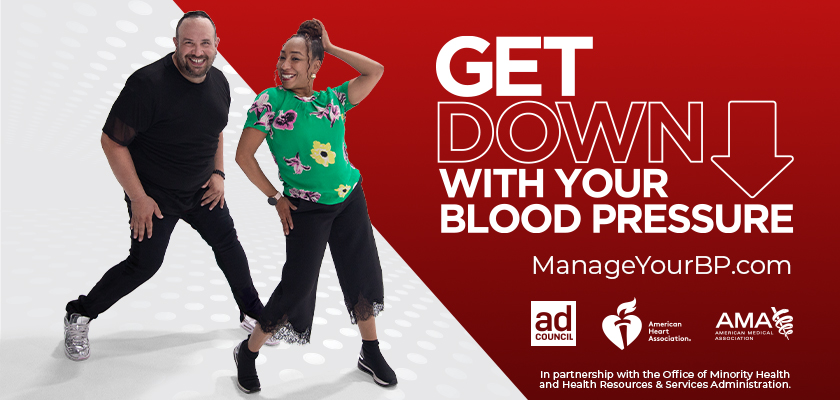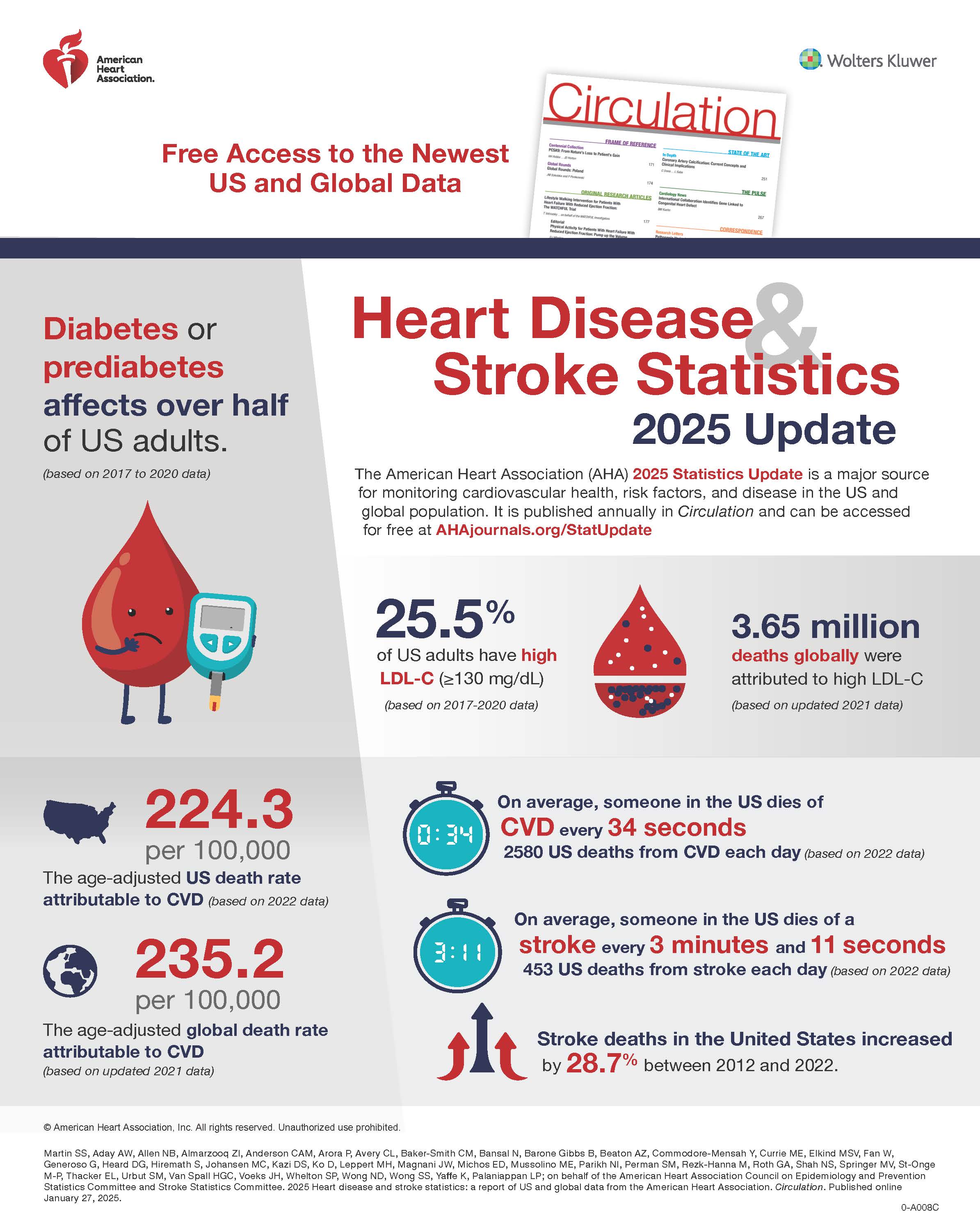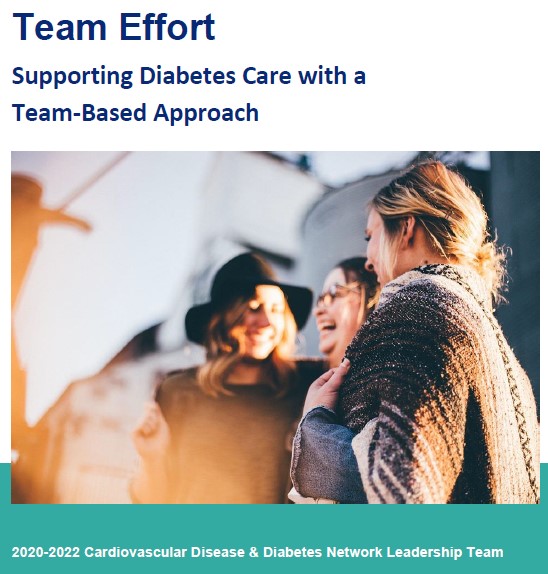Washington State Cardiovascular Connection


Heart disease, stroke, and diabetes are chronic conditions that share key risk factors such as high blood pressure, smoking and being physically inactive. Other contributing factors include limited access to health care, unmet health-related social needs and family history.
This site is designed to support health professionals and community partners in reducing the burden of cardiovascular disease and diabetes across our communities. The Washington State Department of Health’s Heart Disease, Stroke, and Diabetes Prevention Program maintains this site in collaboration with members of the Cardiovascular and Diabetes Network Leadership Team.
Outpace CVD™ recognition award 2025 data submission for 2026 award opens January 1st
Health care organizations can submit blood pressure control rate and evidence-based practice attestation between January 1 and May 15 at 11:59 pm ET to qualify for new and existing awards.
Kick off the 2026 Award Achievement cycle by registering for our upcoming webinar below:
Outpace CVD™ Data Submission 101 for 2026 Award Achievement
January 28, 2026 | 9:00am - 10:00am PT
In this webinar, the American Heart Association will share data submission requirements for 2026 achievement awards in all Outpace CVD™ core programs and partnered initiatives (Target: BP™, Check, Change, Control Cholesterol℠, and Target: Type 2 Diabetes™). This includes updates to the measure details and attestation questions as well as a high-level overview of the data submission process.
New 2025 High Blood Pressure Guidelines
The American Heart Association, American College of Cardiology, and several other health organizations released a comprehensive new guideline with recommendations regarding the diagnosis, treatment, and prevention of hypertension. See the Top Take-Home Messages and updated, Clinical Practice Guidelines, which includes the full report.
The 2025 AHA/ACC High Blood Pressure guidelines include the new recommendation to use the PREVENT™ (Predicting Risk of Cardiovascular Disease Events) cardiovascular disease risk equation when accessing certain patient populations. For additional details on implementing the PREVENT risk equation read the updated Clinical Practice Guidelines.
To learn about significant changes to the new clinic practice guideline, watch the Target: BP Webinar on the 2025 AHA/ACC High Blood Pressure Guidelines.
Continuing Medical Education Course: 2025 AHA/ACC Guideline for the Prevention, Detection, Evaluation and Management of High Blood Pressure in Adults with a Renewed Focus on BP Control.
A Scientific Statement from the AHA and AAC on the Use of Risk Assessment to Guide Decision-Making for Blood Pressure Management in the Primary Prevention of Cardiovascular Disease
The American Heart Association/American College of Cardiology scientific statement summarizes the rationale to recommend the use of the Predicting Risk of Cardiovascular Disease Events equations, the evidence base for the new threshold of 10-year risk of cardiovascular disease of ≥7.5%, and the population-level implications of these revised recommendations.
New BP and Diabetes Resources
- For new resources on addressing hypertension in pregnancy, visit the Teams Based Care page.
- Looking for patient-facing materials on high blood pressure and diabetes? Use this form to order resources at no cost, from the Heart Disease, Stroke and Diabetes Prevention Program at the Department of Health.
2025 Update to American Heart Association’s Heart Disease and Stroke Statistics
The American Heart Association and the National Institutes of Health released an annual statistics update that presents data on a range of major clinical heart and circulatory disease conditions and the associated outcomes. You can read the full article in the association's journal Circulation or review their summary available in English and 8 other languages.
Heart disease remains the leading cause of death in the U.S. as key health risk factors continue to rise. This update and its associated materials are critical resources for professionals and the public to remain informed.
2025 Summary:
Preparing Bystanders for Cardiovascular Emergencies
People with cardiovascular disease, diabetes, or both, are at high risk of heart attacks and strokes. This training is a resource for everyone, including community health workers, to be able to best assist in these emergency situations. 9-1-1 and You: Preparing Bystanders for Emergencies | Northwest Center for Public Health Practice
Understanding the Need for Place-Based Community Care for Latino and Other Underserved and Marginalized Communities
The Mi Salud: A Community Partnered Mobile Health Program, partners with grassroots community-based organizations throughout Washington to check blood pressure, screen A1C levels, and measure height, weight, and BMI. This mobile cardiometabolic health screening, counseling, and referral program organized by the University of Washington's Latino Center for Health aims to improve the health of Latinos in Washington and help reduce the barriers to care that they face.
After each health screening, Mi Salud provides individualized counseling, referrals to local clinics, and healthy living group talks led by a Promotora de Salud (Community Health Worker).
Learn about the Latino Center for Health on their website or contact them at latcntr@uw.edu.
Physical Activity Lowers Mortality Across Weight Spectrum
A new meta-analysis from the British Journal Sports Medicine (PDF) finds that those classified as fit, regardless of BMI status, showed no statistically significant increase in CVD or all-cause mortality risk compared with normal weight-fit individuals. The not-so-good news, all BMI classifications who were unfit showed 2 to 3-fold increases in risk of CVD and all-cause mortality compared with normal weight-fit individuals. All the more reason to encourage everyone, regardless of size, to be physically active. You may wish to share the links below, which lead to resources to encourage physical activity during the colder months.
6 Ways to Stay Physically Active in Winter | National Council on Aging
11 ways to stay active in winter | Heart and Stroke Foundation
How to Stay Active in Cold Weather | American Heart Association
Increase Activity with Self-Directed Walk With Ease
Whether the goal is to manage or prevent chronic health conditions–like heart disease, high blood pressure, and diabetes–or simply increase your overall sense of wellbeing and fitness, the Walk With Ease program is a tool that can support your physical activity and movement.
Walk With Ease can help reduce pain and improve function, mood, and quality of life for adults with chronic conditions, including diabetes, high blood pressure, and heart disease. The Arthritis Association's Walk With Ease program provides resources for community leaders and members in establishing a program. Washington State Department of Health supports efforts with resource pages in both English and Spanish.
Team-Based Care White Paper from the CDNLT
Team Effort: Supporting Diabetes Care with a Team-Based Approach (PDF) is a white paper developed between 2020 – 2022 by the Cardiovascular Disease and Diabetes Network Leadership Team (CDNLT). CDNLT members collaborated to interview seven professionals and one patient in an effort to share that information about the various roles in the health care system and how they are all a part of the diabetes management team. Interdisciplinary teamwork is an important model for delivering appropriate and effective health care to individuals with diabetes and other chronic conditions, such as hypertension. See the Team-Based Care page for more resources.
Support for Lower Blood Pressure

Campaigns have sprung up to help promote National Stroke Awareness Month and High Blood Pressure Education Month (May). Take a look at our Awareness Campaigns page, and choose videos, images, and messages to share with the people you serve.
What Would You Like To Do Here?
This site contains information, resources, links, and actions to take to improve the health of our communities and reduce the impact of cardiovascular disease in our state.
- Use Team-Based Care to improve your patients’ cardiovascular health (without adding to the burden of your primary care providers)
- Use health data to improve high blood pressure and high blood cholesterol in your population
- Partner with community health workers to improve your population’s health
- Partner with pharmacists to improve your population’s health
- Link with community resources to improve your population’s health






